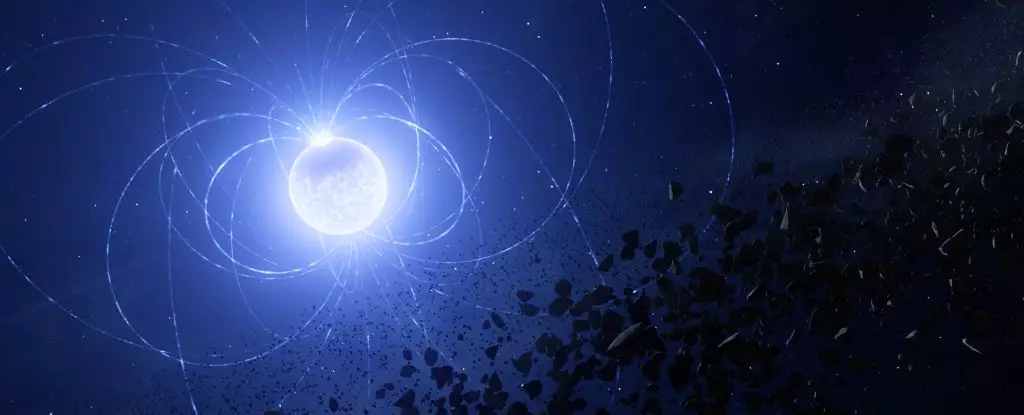White dwarf stars are fascinating remnants of once vibrant celestial bodies, like our Sun, that have reached the end of their main-sequence lifespan. These stars go through a process of transformation, shedding their outer layers to ultimately become dense objects that pack a powerful punch. However, a recent discovery has shed light on the dark side of white dwarf stars – their ability to devour planets that once orbited around them.
The Role of Magnetic Fields
A team of astronomers has made a groundbreaking discovery that showcases the impact of magnetic fields on white dwarf stars. Instead of the remnants of a devoured planet spreading out across the star’s surface, the material was confined to one specific location, leaving a scar of vaporized metal as evidence of the star’s cosmic cannibalism. This finding highlights the crucial role that magnetic fields play in the process of planet consumption by white dwarf stars.
An Unprecedented Observation
The study of a polluted white dwarf star named WD 0816-310 has revealed significant insights into the fate of planets that fall victim to these stellar remnants. The presence of various metallic elements in the star’s atmosphere pointed towards a planetary fragment of substantial size, comparable to the asteroid Vesta. What sets WD 0816-310 apart is the unique concentration of metallic elements in one specific area of the star, driven by the star’s magnetic field.
Through careful observation, researchers discovered a synchronization between the strength of the star’s magnetic field and the concentration of metallic elements in a localized patch on the star’s surface. This phenomenon, termed the “scar” by astronomers, suggests that as planetary material falls onto the white dwarf, it is guided and held in place by the magnetic field, creating a distinct and concentrated area of debris. This magnetic funnel effect is a novel finding in the study of polluted white dwarf stars.
Read More: The Development of a World-Leading Microwave Photonic Chip
The implications of this discovery go beyond the specific case of WD 0816-310. It raises questions about the nature of planetary consumption by white dwarf stars and challenges existing theories about the dispersion of planetary material on these stellar remnants. The variability observed in the strength of elemental signals over the star’s surface indicates a complex interplay between magnetic fields and planetary debris, opening new avenues for research in necroplanetology.
The study of polluted white dwarf stars like WD 0816-310 has unveiled a dark truth about the fate of planets that once orbited these cosmic giants. The role of magnetic fields in funneling and concentrating planetary material on the surface of white dwarf stars represents a paradigm shift in our understanding of stellar remnants and their interactions with planetary systems. As astronomers continue to unlock the secrets of the universe, discoveries like this provide valuable insights into the complex processes that govern the cosmos.


Leave a Reply